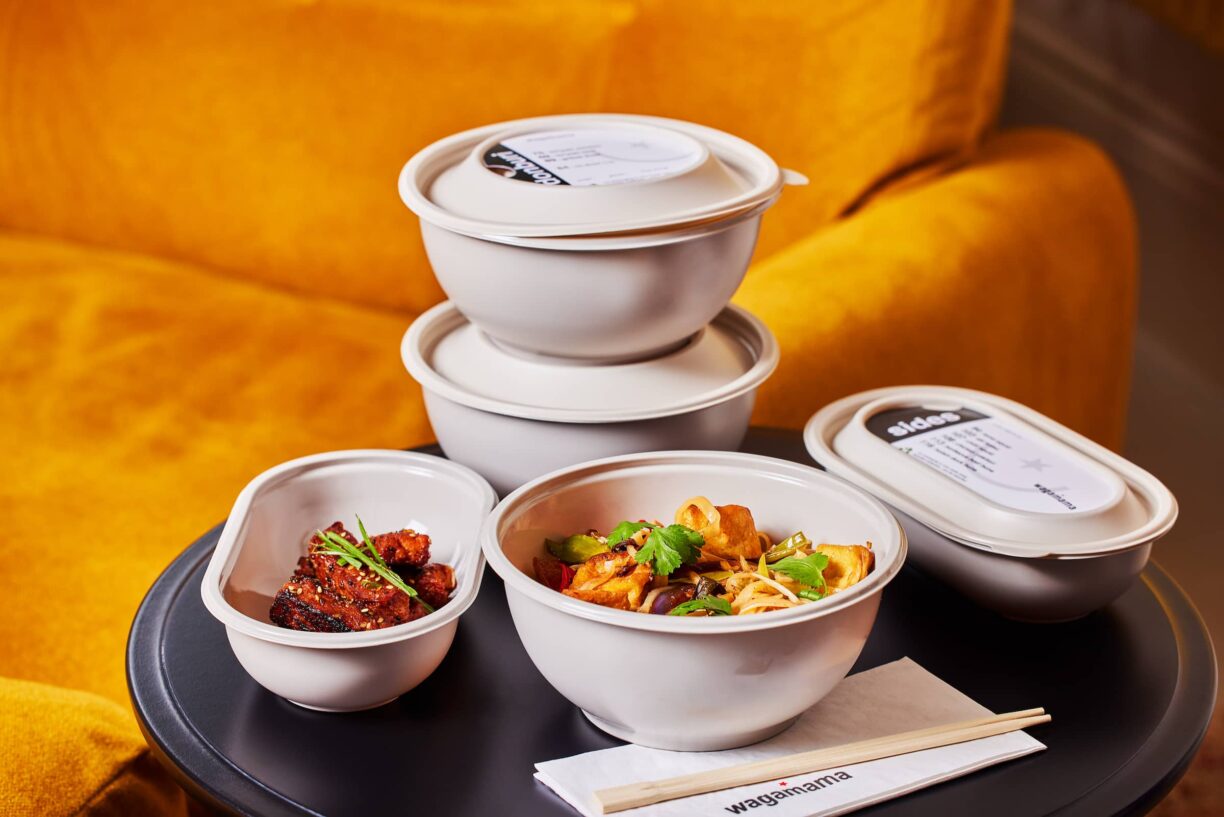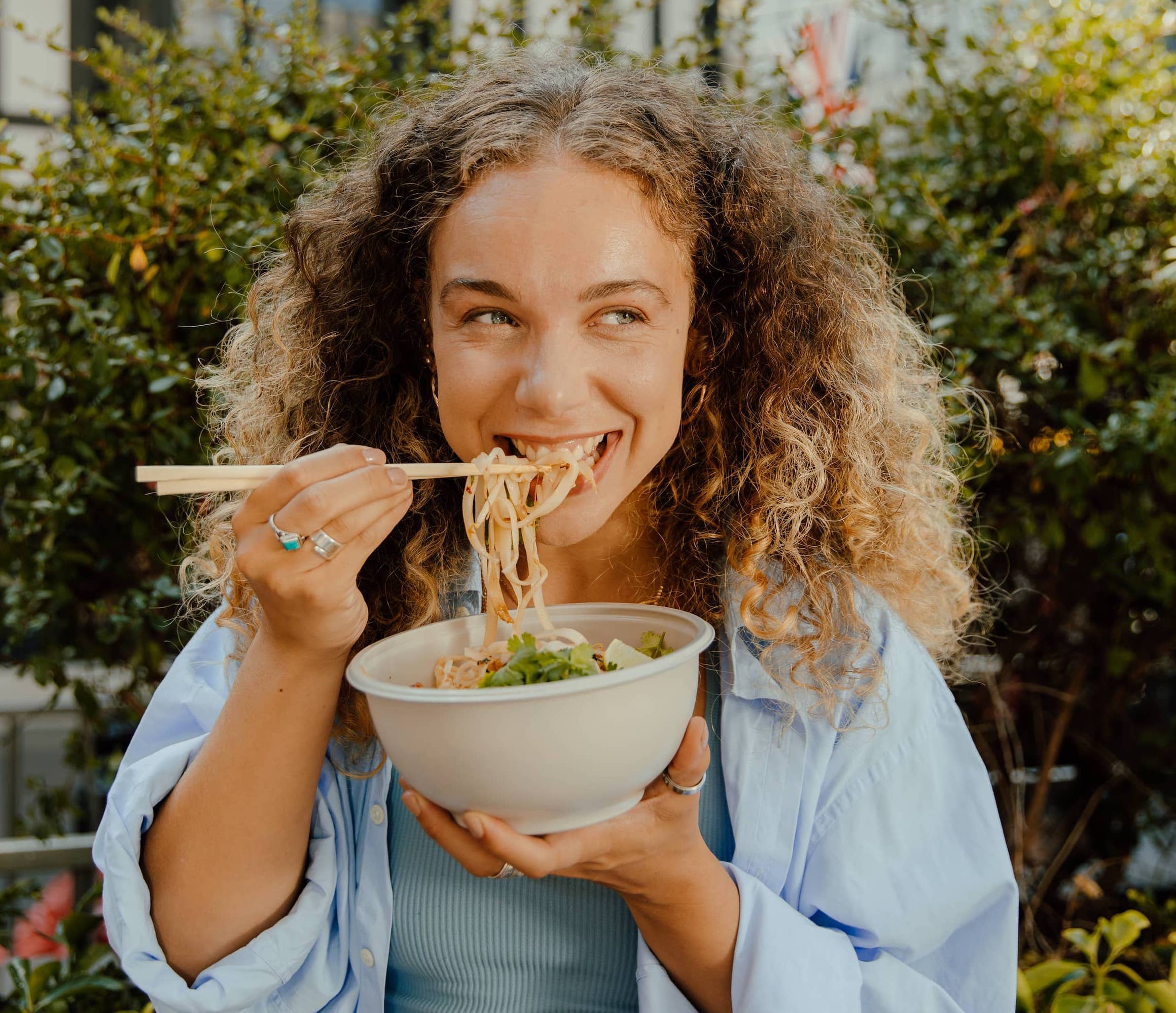wagamama announces it is replacing more than eight million delivery bowls with new packaging using recyclable material.
The decision will remove up to 330 tonnes of virgin plastic from the supply chain every year.
The new packaging, made from cPET, will reduce the carbon footprint of the brand’s most popular dish – the katsu curry – by 62%.

The new packaging material make-up is the result of four years of planning, and advice from leading plastic experts, UK waste collectors, suppliers and cutting-edge product designers.
The new packaging will roll out from August 15 and will be live across all restaurants and delivery kitchens by October this year in a bid to help tackle the world’s increasing plastic pollution problem.
Alongside the new packaging initiative, wagamama will also be launching its bowl return programme ‘Bowl Bank’, created in response to the varied practices of the UK waste streams.

wagamama’s new initiative is aiming to take ownership of its waste, inviting guests to return their packaging to their local restaurant. Bowl Bank will be available in every wagamama restaurant by October 2022.
wagamama CEO Thomas Heier said: “We are in a fortunate position that wagamama is much-loved by consumers, but we know this comes with a huge responsibility.
“Reducing our use of virgin plastics is a complicated mission – but one we have been dedicated to for four years. This has been driven by the belief that we needed do better for our guests, teams and the planet.
“Months of trial and error, conversations with leading experts, and research into UK waste streams has resulted in a moment where we can finally say we’re proud of our packaging. Proving small choices make for big change and sustainable progress doesn’t happen overnight. This is an exciting and overdue step for us but only the beginning”
wagamama is one of the first in the hospitality industry to use ‘cPET’ for the bases of their famous bowls, more commonly used for supermarket ready meals. cPET is a food-safe material made from 70% recycled content.
Unlike most other PET’s, it has excellent heat resistance, making it the perfect material for delivering hot ramen. The remaining 30% of the packaging products will be plastics which are needed to maintain the structural integrity of the container.
Each piece of packaging has been nipped and tucked ensuring the new bowls perfectly fit portion sizes and no excess material is used.
No detail has been overlooked, even down to moving the containers to a lighter creamy sand colour to ensure the bowls and lids will be more easily detected by NIR (Near Infra Red) scanners in recycling plants.
wagamama has also opted for an easily recyclable PP lid and is committed to working with project partners to get to a fully cPET solution within 18 months. Proving sustainable change is about progress not perfection.
Simon Ellin, president of the UK Recycling Association and leading expert who advised wagamama on the move to cPET said: “It’s incredibly encouraging to see businesses like wagamama take accountability for their waste and go to great lengths to research and understand the complex nature of the UK recycling landscape. There’s so much misinformation and false claims about where rubbish goes, you really need to take the time to fully understand the problem.
“Assessing their business needs, I’m confident cPET is the most sustainable option available to them at this time, and I’m pleased to see they have invested in this option. They will be leading consumer behaviour change with their ‘Bowl Bank’ initiative, and it would be brilliant to see more return initiatives like this from their peers.”
Jo Barnard, Creative Director of design and innovation agency Morrama, said:
“It was great to work with wagamama as they were willing to take educated risks and ultimately allow their main sustainability objective to lead the project.
We continuously balanced bettering guest and team experience with sustainability. We have reached a truly unique solution which reduces a massive amount of virgin plastic while still achieving the much loved ‘bowl to soul’ aesthetic wagamama is famous for.”
wagamama’s new packaging will be rolled out across the UK between August and October, as the current packaging is phased out.
wagamama is renowned for its iconic katsu curry as well as a menu packed full of fresh, nourishing dishes including rice bowls, noodles, and curries, and is expecting a huge demand for their new plant-based dishes.
In October 2021 wagamama announced the launch of new plant-based dishes meaning it is the UK’s first high street restaurant to give plant-based dishes equal share on their menu.
Vegan trailblazers wagamama will continue to promote plant-based eating as one of the most powerful choices consumers can make in the fight against climate change. As part of their ‘2021 Positive Action Plan’, wagamama pledged to make half their menu plant-based by the end of the year. A commitment they met three months early upon the launch of their new menu on October 6.
wagamama has achieved it’s 50 per cent plant-based commitment through launching dishes like Spicy Teriyaki Vegan ‘Chicken’ Steamed Buns, Spicy Vegan ‘Short Rib’ Ramen, Teriyaki Vegan ‘Chicken’ Ramen, and Shu’s ‘Shiok’ Jackfruit.
wagamama: our story and our food ‘kaizen’, meaning ‘good change’ is the philosophy that sits right at our heart. It shapes every dish we create, and pushes us to find better ways in all that we do. We’re restless spirits, forever creating and making things better.
We’ve been practising kaizen since 1992 when we opened our first doors in London’s Bloomsbury. Inspired by fast-paced, Japanese ramen bars and a celebration of Asian food, wagamama burst into life. We set out to create a unique way of eating; bringing the fresh, nourishing, flavours of Asia to all.
A warming bowl of bold ramen, teppan dishes griddled to perfection or if you would rather rice, you’re in luck – our menu features many Japanese favourites. Fresh, authentic menus that are updated seasonally. wagamama is a staple of modern Asian cuisine
In the name of kaizen, our standards are high. Our ingredients are cooked fresh, and served fresh. Every bowl and plate that we fill with them is served as soon as it’s ready. The colours and aromas, flavours and spices are always at their best when they touch your table.





